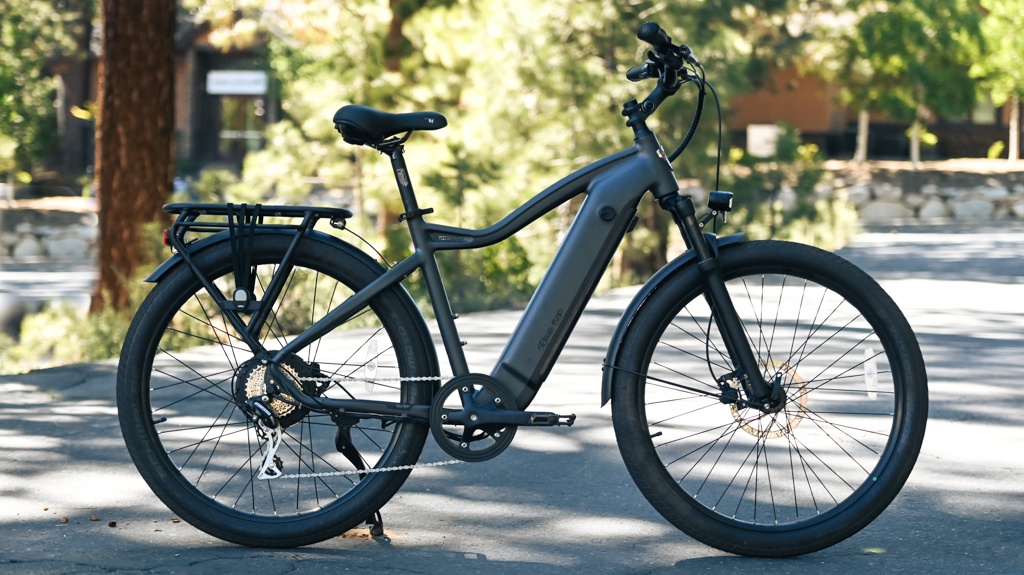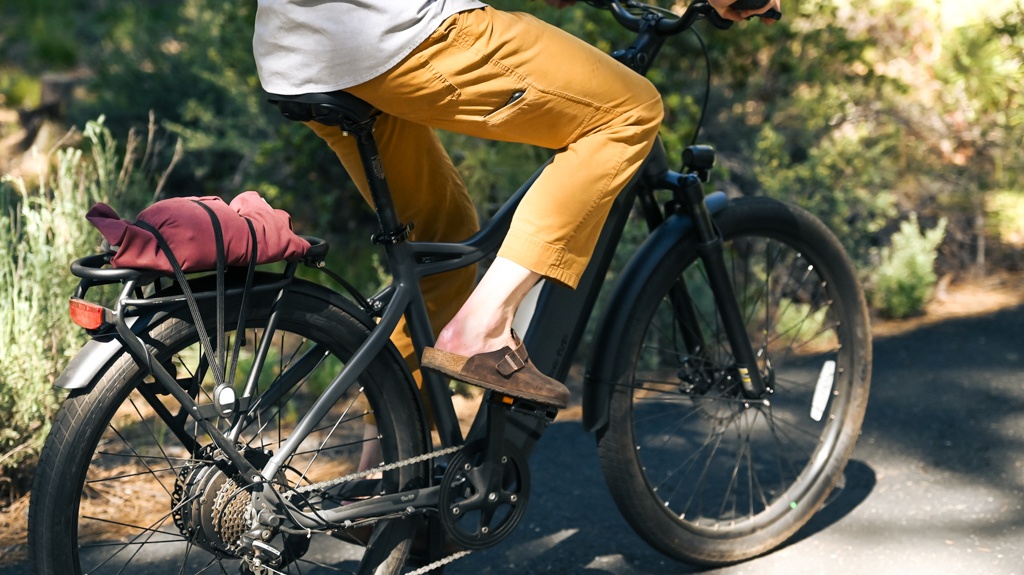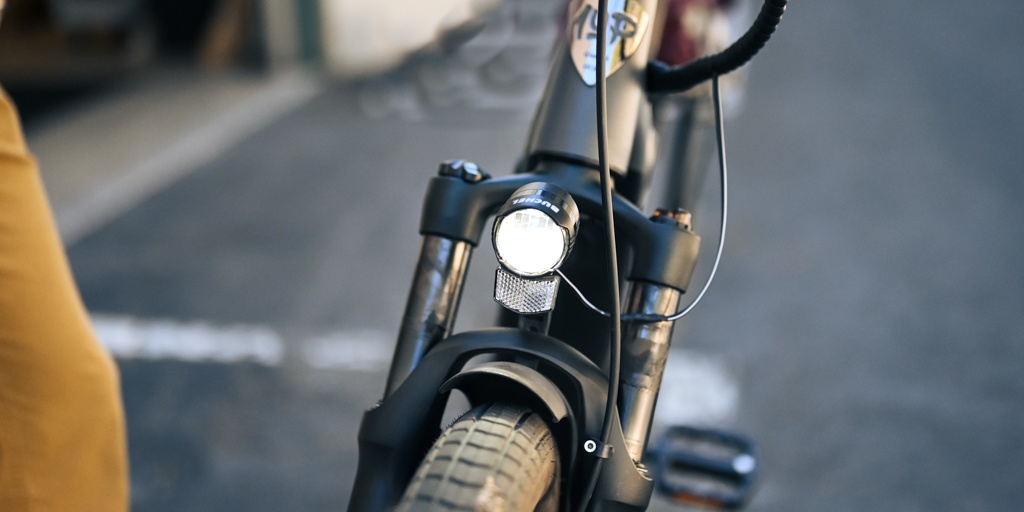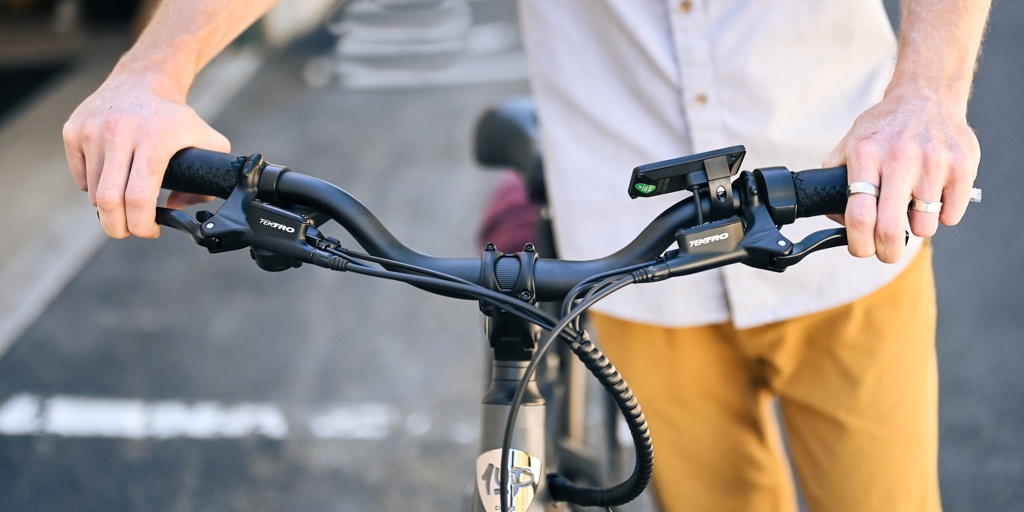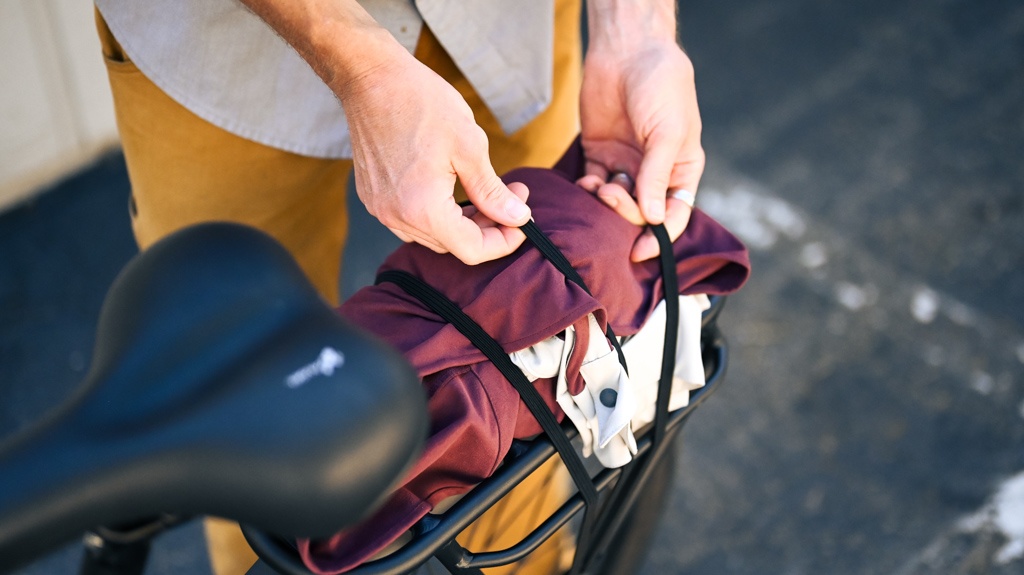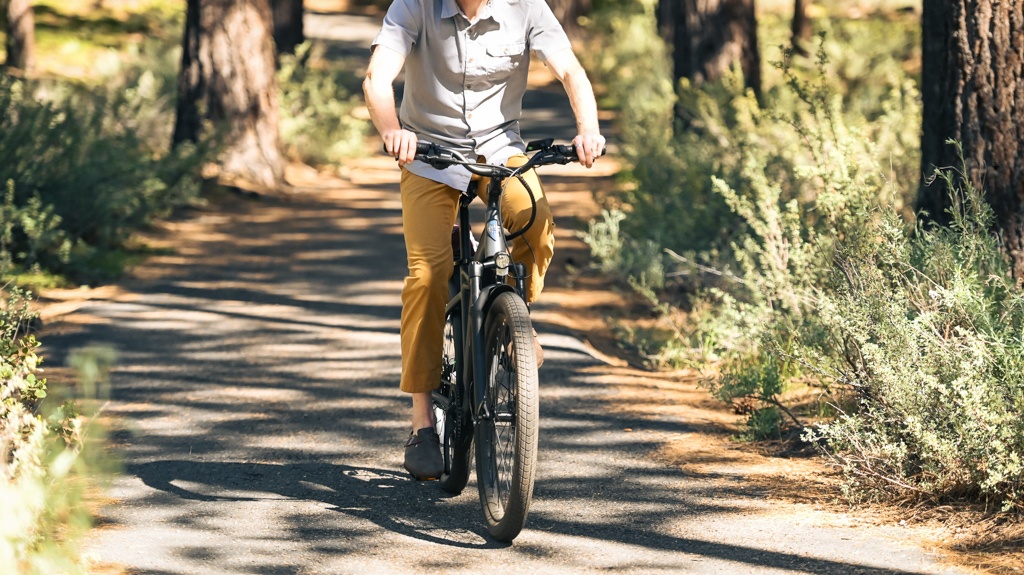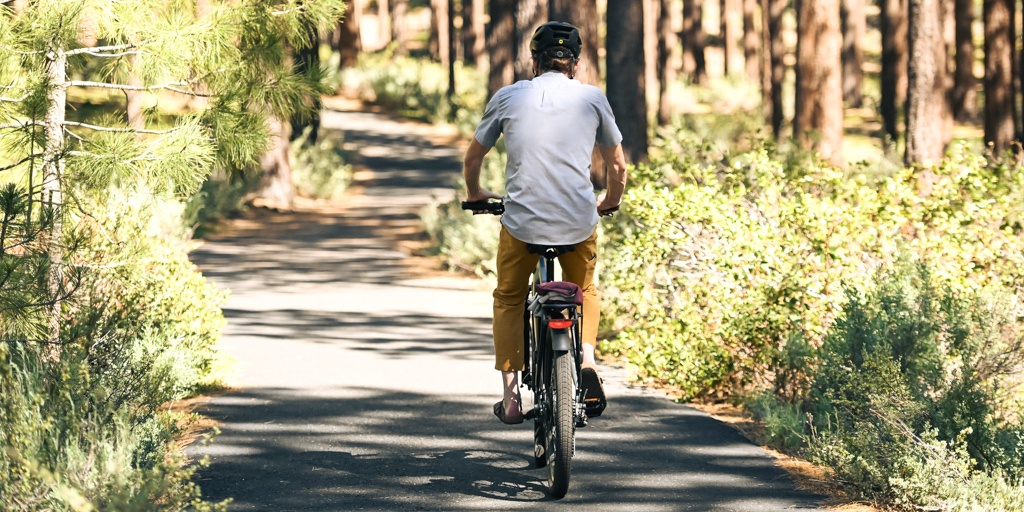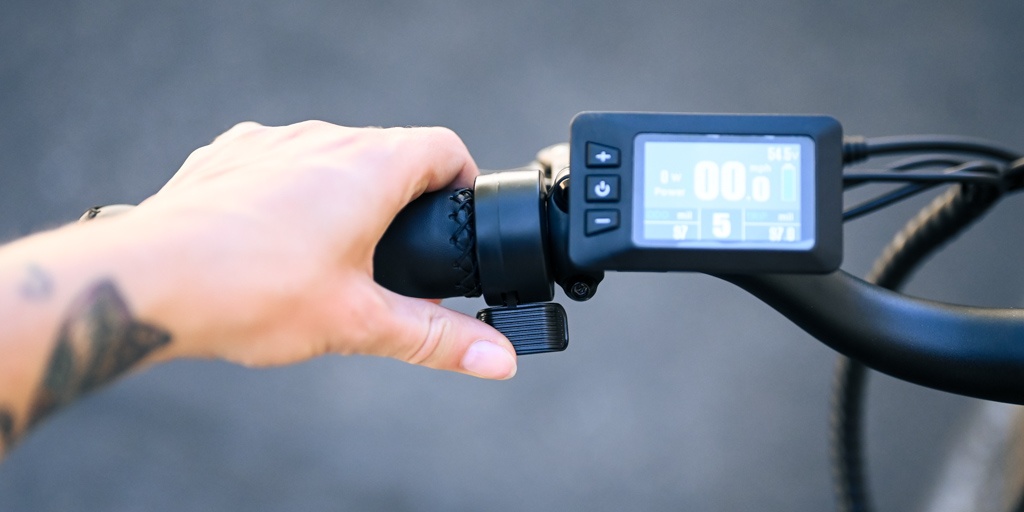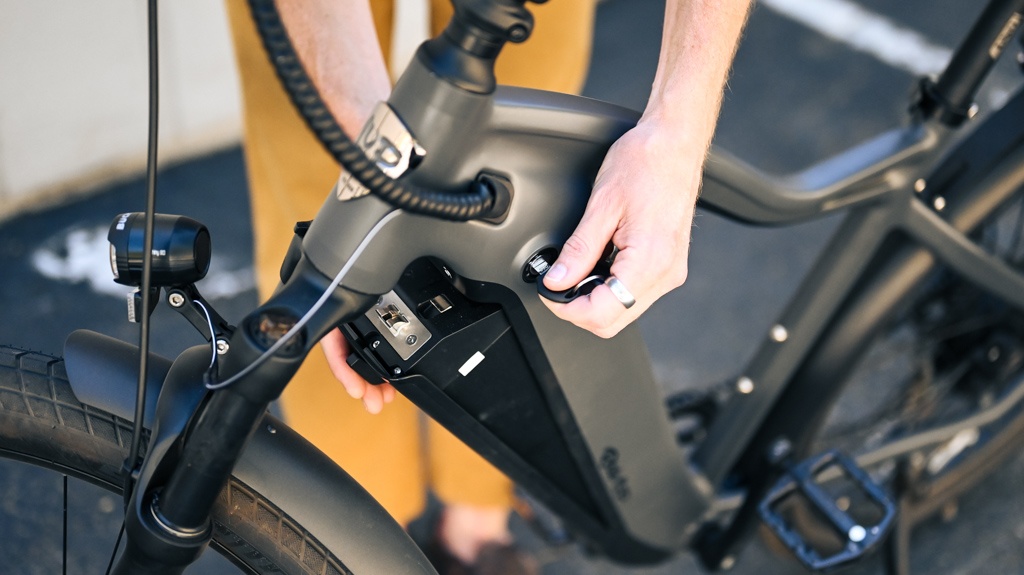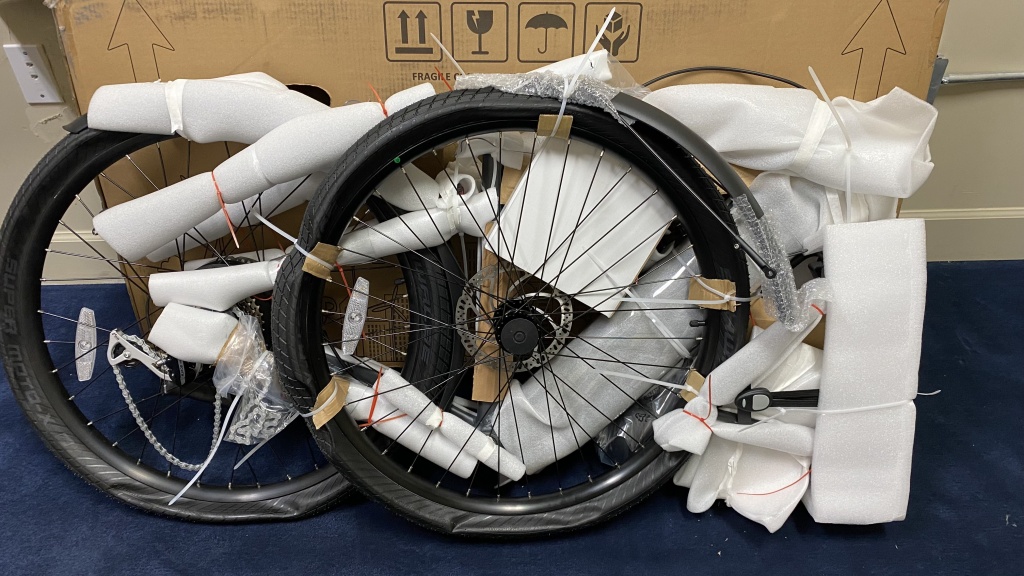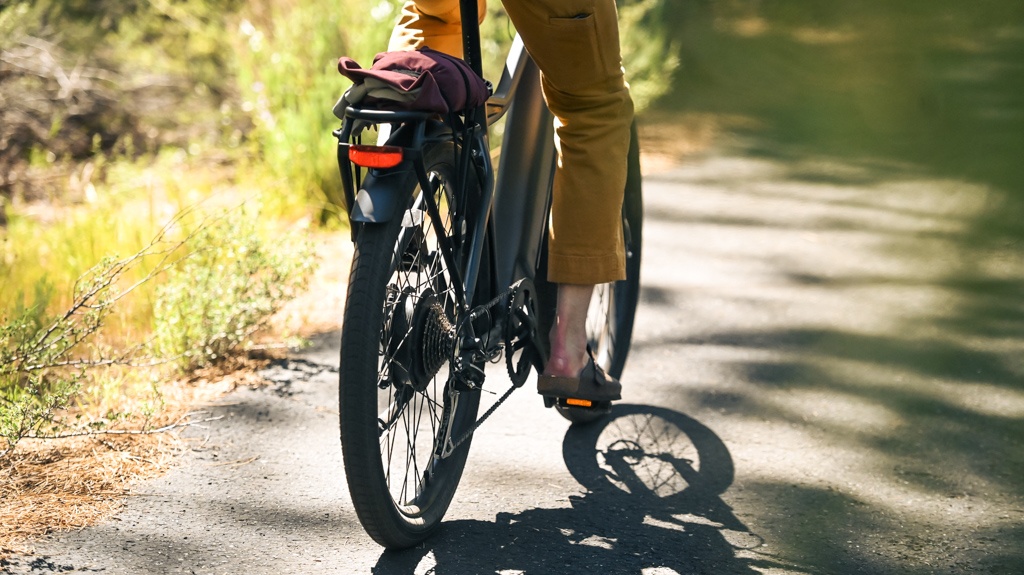Our Verdict
Compare to Similar Products
 This Product
Ride1Up 700-Series | |||||
|---|---|---|---|---|---|
| Awards | Best Overall Electric Commuter Bike | Best Bang for Your Buck Folding Electric Commuter Bike | Best Folding Commuter Bike | Best Bang For Your Buck Electric Commuter Bike | |
| Price | $1,595 List $1,495 at Ride1up | $999 List $999.00 at Lectric eBikes | $1,395 List $1,045 at Ride1up | $1,899 List $1,099 at Blix Bikes | $1,295 List $1,095 at Ride1up |
Overall Score  |
|||||
| Star Rating | |||||
| Bottom Line | A fair price combined with class-leading performance across the board make this our favorite electric bike | It's hard to argue with the value of this versatile and affordable folding electric bike | This Class 3 electric cruiser will take you anywhere you want to go in comfort and style | Lighter weight and more easily portable, this is the most well-rounded folding model we've tested | A true hybrid Class 3, this bike was built for pleasure and makes for strain free bike rides |
| Rating Categories | Ride1Up 700-Series | Lectric XP 3.0 Step... | Ride1Up Cafe Cruiser | Blix Vika + Flex | Ride1Up Turris XR |
| Ride (25%) | |||||
| Range (25%) | |||||
| Power (25%) | |||||
| Interface (15%) | |||||
| Assembly (10%) | |||||
| Specs | Ride1Up 700-Series | Lectric XP 3.0 Step... | Ride1Up Cafe Cruiser | Blix Vika + Flex | Ride1Up Turris XR |
| Wheel size | 27.5-inch | 20-inch | 26-inch | 20-inch | 27.5-inch |
| Battery Size | 720Wh | 500Wh | 720Wh | 614Wh | 614Wh |
| E-Bike Class | Class 3 | Class 2 (Can be configured Class 3) | Class 3 | Class 2 (Can be configured Class 3) | Class 2 (Can be configured Class 3) |
| Motor Power | 750W | 500W | 750W | 500W | 750W |
| Number of pedal assist settings | 5 | 5 | 5 | 5 | 5 |
| Top speed throttle (mph) | 20 | 20 | 20 | 20 | 20 |
| Top speed pedal-assist (mph | 28 | 28 | 28 | 24 | 28 |
| Sensor | Cadence | Cadence | Cadence | Cadence | Cadence |
| Measured Distance Range (miles) | 32.4 | 24.51 | 27.9 | 27.5 | 22.1 |
| Frame material | Aluminum | Aluminum | Aluminum | Aluminum | Aluminum |
| Weight Limit (lbs) | 275 | 330 | 350 (up to 130 on rear rack) | 270 | 300 |
| Measured Weight | 63 lbs 11 oz | 62 lbs 8 oz | 65 lbs | 51 lbs 14 oz | 60 lbs 8 oz |
| Folding? | No | Yes | No | Yes | No |
| Drivetrain | Shimano Acera 8-speed | Shimano Tourney 7-speed | Shimano Acera 8-speed | Simano 7-speed RevoShift | Shimano Altus 7-speed |
| Brakes | Tektro Hydraulic Disc | Hydraulic Disc | Zoom Hydraulic Disc | iZoom Hydraulic disc | Zoom Hydraulic Disc |
| Additional features | Fenders, rear rack, front and rear lights | Fenders, rear rack, front and rear lights, folding design, front suspension, mounting points for racks, baskets, and a bike lock, IP-65 rated for water resistance | Fenders, front and rear lights, rear rack, Mozo 80mm suspension fork | Fenders, lights, Rear cargo rack, bell, folding pedals, USB charging port, removable battery | Fenders, front light, 100mm suspension fork, kick stand |
| Warranty | One Year | One Year | One Year | One Year | One Year |
Our Analysis and Test Results
Ride1Up has quickly gained traction and market share in the fast-growing electric bike market by offering quality models like the 700-Series at very competitive prices. This fully-featured Class 3 model boasts performance specs like a 750W motor, a massive 720Wh battery capacity, a suspension fork, and powerful hydraulic disc brakes. Not only does it come very nicely equipped, but it costs less than comparable bikes from other brands. We took it to task against our diverse selection of the best electric bikes and came away very impressed by its performance.
Performance Comparison
Ride
The 700-Series has a great ride quality that's smooth and forgiving with a high level of comfort and quality components for the price. It's on the heavier side, but we still found the handling to be precise and responsive yet balanced and never harsh or unpredictable. It's impressive the value that Ride1Up has packed into the bike, with a 100mm suspension fork, powerful hydraulic disc brakes, and name-brand components. It also comes decked out with all the features most riders will ever need.
With high volume tires and a 100mm of front suspension, the 700-Series provides a very comfortable and well-damped ride. It still prefers smooth surfaces, but it definitely takes the edge off cracks, bumps, and holes in the road and feels much nicer on rough surfaces than many of the other bikes we tested. From a handling standpoint, it strikes a good balance between the super relaxed comfort-style models and the more aggressive city-style bikes. It doesn't have the zippiest handling, but it's also not sluggish feeling or slow either. We think it's just right. With 27.5-inch wheels, girthy tires, a relatively long wheelbase, and a fairly heavy weight, this bike is very stable and planted at speed whether you're bombing down a hill or ripping at 28 mph using pedal assist. It feels best making medium to long radius turns, yet it still manages to be maneuverable enough in tighter spots and at lower speeds.
Comfort levels are high with the 700-Series. We tested the XR/step-over frame that has a total weight capacity of 275 lbs (up to 50 lbs on the rear rack) and a recommended user height range of 5'5" to 6'4" with a standover height of 29.5-inches. Our six-foot-tall tester felt right at home on this bike, as did several other GearLab team members, including a 5'8" editor who liked the bike so much she purchased it when we were finished testing. The seatpost offers a large range of seat height adjustment, with a quick-release clamp for on-the-fly changes. The handlebar has a decent amount of rise, plus you can adjust the height further with the adjustable stem. The 700-Series is also offered in an ST/step-through frame with a standover/step-over height of 17-inches and a recommended user height range of 5'0" to 6'2". We found the Selle Royal seat to have a very agreeable shape and a nice amount of padding, and the VELO faux leather ergonomic grips provide a comfortable perch for the hands.
Considering the price of the 700-Series, Ride1Up equipped it with quality components that contribute to its ride quality. The 8-speed Shimano Acera drivetrain provides an adequate gear range for tackling the city street and climbing some hills, and the trigger shifters are nicer than some of the other options on other bikes we tested. The Tektro hydraulic disc brakes with 180mm rotors provide heaps of stopping power for confidence-inspiring control. The 2.4-inch wide Schwalbe Super Moto-X tires roll fast and have loads of air volume to help dampen the ride, and the Mozo hydraulic fork offers 100mm of bump-smoothing suspension. The Wellgo alloy pedals have a good-sized platform and provide plenty of grip to keep your feet planted, and they should be more durable than cheaper composite/plastic options.
Features
The 700-Series does have a somewhat more involved assembly process due to the inclusion of a number of great features. These include metal fenders front and rear, integrated lights front and rear, and a cargo rack that is rated up to 50 lbs. The rack has side mounts for panniers, plus it comes with a quality three-strap bungee to hold your gear in place. The bungee may sound somewhat trivial, but it's actually a really nice touch as it fits the rack perfectly and does a great job securing your cargo. Additionally, Ride1Up sells front racks, front baskets, and panniers so you can customize your rig to your liking.
Range
With a large 720Wh battery, we expected the 700-Series to do well in our range test, and we were not disappointed. In fact, it proved to be the top performer, traveling over two miles farther than the next closest competitor. If range is high on your list of priorities, the Ride1Up has you covered.
A larger battery typically equates to a longer range, and that was the case with the 700-Series in our standardized throttle-only range test. With 720Wh of juice, we rode from a full charge to a dead battery over the course of 32.4 miles with 1,726 feet of elevation gain/loss without even pedaling. With an average speed of 17.2 mph, this test took an hour and 53 minutes to complete. Ride1Up claims a range of 30-50 miles, and the 700-Series easily topped the low end of that range using full-electric/throttle power only. On flat terrain without the rolling hills of our test course, it seems logical that it could go even further. Of course, we think you could extend its range significantly using pedal assist and putting some of your own effort into the cranks.
Power
The 700-Series comes equipped with a Bafang 750W geared hub motor that provides plenty of power. In fact, this Class 3 model is easily one of the most powerful electric bikes we've tested, topping the charts in this metric. The motor is reasonably quiet, power delivery is smooth, and it feels eager to get up to its top pedal-assisted speed of 28 mph or 20 mph using the throttle.
Rde1Up equipped the 700-Series with a Bafang 750W geared hub motor. Geared hub motors are generally considered to have better low-end/high torque power than their brushless/direct drive counterparts, and we found this to be reflected in our testing. In our acceleration tests, we found that this bike wasn't the absolute fastest off the line, though it was still no slouch at 0-20 mph in 13 seconds on flat ground using the throttle. Instead of feeling super jumpy when you push the throttle, the power delivery feels very smooth and controlled, and once up to speed, it maintains it very well. We also performed some uphill acceleration tests and found it to be one of the strongest while climbing our test hill. From a complete stop, it was able to accelerate up the moderate pitch of the hill up to 16 mph, only slowing to 14 mph at the steepest part of the incline near the top where most other bikes bogged down significantly more. This was also reflected in our range testing where the 700-Series managed to maintain an average speed of 17.2 mph over the course of 32.4 miles of riding gradually rolling hills while using the throttle-only. This is one of the highest average speeds of all the models we tested, and a testament to the motor's ability to maintain speed while going uphill.
Sure, you could just push the throttle and use up your battery that much quicker, but with 5 levels of pedal-assistance, the 700-Series provides a great range of support for your pedaling efforts. As you shift up through the levels, the motor provides more assistance and a higher top speed, so you can choose the level that best suits your needs or the situation at hand. The assistance is engaged through a cadence sensor, and it reacts very quickly when the cranks start turning. The motor delivers power as long as you are pedaling, regardless of how much effort you're putting into the pedals, and we found the delivery to feel quite smooth and controlled, not as jumpy as some other models we tested. In level 5, we found it to be quite easy to get this Class 3 bike up to its top pedal-assisted speed of 28 mph, requiring less effort than some other competitors. We also found it to feel very strong while climbing the hills around GearLab HQ, making quick and easy work of the steepest inclines. For those who like to customize things, the pedal-assist settings are also adjustable so you can dial them exactly how you like them, the sensitivity of the pedal assistance, speed limit, and more.
Interface
While it isn't the fanciest or most advanced, we found the display and controls of the 700-Series to work very well. The control buttons and throttle have pretty good ergonomics and their use if very intuitive and straightforward and the display is fairly large and easy enough to read. The sleek frame houses the battery within the downtube of the frame, plus it is easily removable for charging on or off the bike.
The controls of the 700-Series consist of a thumb paddle throttle and a display/control unit located next to the left grip. The paddle throttle is immediately next to the grip and it is very easy to reach and press with the thumb. Next to that, the display has three buttons on its left side, closest to the tumb. The power button in the middle turns the bike on and off, while the + and - buttons shift up and down through the pedal assist levels. The display screen is fairly large and it shows you everything you need to know at a glance. Our testers tend to prefer displays that are centered on the handlebar, but this one is easy enough o see while riding regardless of its location by the left grip. The screen has a dark background with bright numbers/letters, and we found it to be easy to read, even in direct sunlight. At the top of the screen, the wattage/power output of the motor is displayed in small numbers on the left side, the current speed is shown in large numbers in the middle, with a battery graphic on the right that shows the remaining charge in green (voltage is also displayed above, and it can be changed to a percentage if you prefer). Across the bottom of the screen, your pedal-assist setting is in the middle (0-5), the trip meter is on the right, and the total odometer is shown on the left.
One of the primary reasons that Ride1Up's bikes look good is the super clean battery integration. The 720Wh battery of the 700-Series is completely housed within the downtube of the frame, giving it a very streamlined appearance. Despite this integration, the battery is still very easily removable by unlocking it with the keys, then turning a small tab and pulling it out from the bottom of the downtube. This way you can take the battery with you for security or charging off the bike, otherwise, there is a large rubber charging port on the right side of the frame.
Assembly
The 700-Series is one of the most involved and time-consuming bikes to assemble that we've ever tested, earning it a 6 out of 10 in this metric. It's not that anything is incredibly difficult, there's just a lot going on, with more steps in the process than most other bikes we tested. If you're not particularly good at assembling things, this is one bike that we'd suggest bringing to a bike shop to do it for you. If you're reasonably confident in your ability to follow instructions closely and put things together, then you should be able to do it yourself, just know that it's going to take a little time.
In our experience, Ride1Up bikes come a little less assembled than many of their competitors, and they are able to fit them into slightly smaller boxes as a result. That said, it's still a fairly large box, and it's certainly not lightweight given the fact that the 700-Series has an assembled weight of 63 lbs and 11 oz. Unless you're super strong, we'd suggest getting another person to help you remove the bike from the box. Once out of the box, our bike was very well protected from shipping damage, but that meant there was quite a lot of packing materials to be removed from the frame and all the parts. The bike comes with detailed assembly instructions, plus there's an assembly video that can guide you through the process step by step. It also comes with a nice little set of allen wrenches and a free Ride1Up beanie (a nice touch). Again, nothing about the assembly is particularly difficult, but there is a lot going on here. We suggest following the instructions exactly and having a little bit of patience. You'll need to install the fork, front brake caliper, front wheel, front fender, front light, rear rack, rear light, handlebar and stem, drive-side crank arm, and the seat and seatpost (not necessarily in that order). Once that's all done, you need to pump up the tires and make comfort adjustments to the seat and handlebars to dial it in to your liking. The entire process took our experienced bike assemblers about an hour and 15 minutes to complete.
Should I Buy the Ride1Up 700-Series?
Not only is the 700-Series one of the best all-around models we've tested, but we think it's also a great value. Ride1Up has managed to produce a bike that's powerful, rides very well, has a great range, and comes loaded with features that most riders will appreciate for a price that's less than comparable bikes from the competition. This versatile ride has you covered whether you're looking to commute across town in a hurry, cruise to the beach, or run errands around town. We think you'd be very hard-pressed to find another electric bike on the market that performs this well at this price.
What Other E-Bikes Should I Consider?
The main competition is the Ride1Up Turris XR, which is a few hundred dollars cheaper. The 700 has better acceleration and better range and comes with a rack. But the Turris is still a great bike that meets most people's needs while saving some money. Are you looking to get a little more adventurous on your rides? Well, look no further than the Aventon Aventure. This Class 3 fat-tire bike also packs a punch with its 750W motor and 720Wh battery, and its girthy 4-inch wide knobby tires expand its versatility to everything from pavement to dirt roads and paths. The Aventure can take you there if you want to get off the beaten path.


